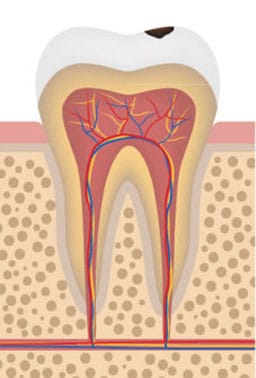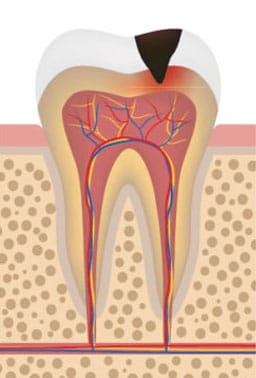The earliest sign of tooth decay appears as a matte white spot on your tooth, and is still in a reversible state. The enamel can repair itself by decreasing sugar intake and using good oral hygiene. If tooth decay progresses past the white spot appearance, the tooth can start to look dark. This means that the decay has reached the inner layer below the enamel, called dentine. The last stage of tooth decay is full cavitation where the dentine has become so decayed, that it can’t support the enamel which collapses, leaving a cavity.



